FLW preview: No longer a muddy situation
Wal-Mart FLW Tour, Lake Toho, Feb. 9-12
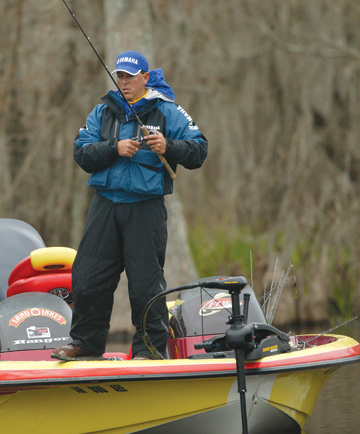
Much of the talk after the season-opening event of the 2005 FLW Tour centered around how small Lake Okeechobee was fishing. Much of the lake’s vegetation was ripped out by hurricanes last summer, which caused colored water to move in and consequently eliminated many popular fishing holes. Several anglers simply weren’t willing to fish in an environment where your nearest competitors fished only a rod’s length away. Others felt the intense fishing pressure would scatter the bite or turn the fish off altogether. Those that avoided the crowd got burned.
Immediately after the tournament, concerns shifted to the second stop on the FLW Tour: Lake Toho, another shallow-water Florida fishery that was hit by the barrage of hurricane activity.
Lake history, facts
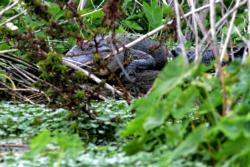 Lake Tohopekaliga, commonly called Toho for short, is the sixth-largest natural lake in Florida, spanning over 22,000 acres with an average depth of only 5 feet. Although the tournament is officially listed at Toho, FLW Tour anglers are allowed to connect to Kissimmee, Hatchineha or Cypress. Despite the relatively low weights seen by the recent BASS event, Lake Toho remains a legendary body of water with trophy largemouth bass potential. In addition to largemouth bass, Toho is home to healthy populations of black crappie, bluegill, redear sunfish, channel catfish, chain pickerel, warmouth and bullhead catfish.
Lake Tohopekaliga, commonly called Toho for short, is the sixth-largest natural lake in Florida, spanning over 22,000 acres with an average depth of only 5 feet. Although the tournament is officially listed at Toho, FLW Tour anglers are allowed to connect to Kissimmee, Hatchineha or Cypress. Despite the relatively low weights seen by the recent BASS event, Lake Toho remains a legendary body of water with trophy largemouth bass potential. In addition to largemouth bass, Toho is home to healthy populations of black crappie, bluegill, redear sunfish, channel catfish, chain pickerel, warmouth and bullhead catfish.
The last time the FLW Tour visited Lake Toho was in 1998, when Don Hogue Jr. of Pelham, Ala., captured first place by bringing in a four-day total of 62 pounds, 9 ounces. This season figures to be quite different as the Florida Game and Fish Commission scraped several layers of decayed vegetation and silt from the lake’s bottom nearly one year ago. Weather is also certain to play a crucial role as bass move from the prespawn mode to the beds.
Spawn or no spawn?
Dean Rojas took third place at the season-opening FLW Tour event on Lake Okeechobee and is excited about FLW’s return to Toho.
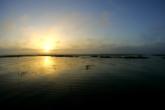 “When we were at Toho, a cold front came in and cooled everything down,” said Rojas, referring to the recent BASS event held on Toho. “Nearly all the fish were in the prespawn mode. With warmer weather there is a very good chance the fish will be on the beds. If that is the case, I expect many anglers to be sight-fishing with crawdad, lizard or worm imitations.
“When we were at Toho, a cold front came in and cooled everything down,” said Rojas, referring to the recent BASS event held on Toho. “Nearly all the fish were in the prespawn mode. With warmer weather there is a very good chance the fish will be on the beds. If that is the case, I expect many anglers to be sight-fishing with crawdad, lizard or worm imitations.
“When sight-fishing, it’s not so much about what bait you use, it’s a matter of finding the fish. If the fish aren’t on the beds, then secondary patterns will be in play, and anglers will have to find other structure such as drop-offs.”
Rojas should know: He stunned the bass-fishing world with his record five-fish limit, weighing 45 pounds, 2 ounces, at the 2001 Florida Top 150 on Toho. While he doesn’t expect similar weights, he does foresee large sacks.
“I think right at 26 pounds will make the cutoff,” Rojas said.
Despite reports to the contrary, Rojas doesn’t believe Toho will fish anything like Okeechobee.
“It’s not like Okeechobee at all. The lakes are very clear and aren’t fishing small at all,” he said. “I do think probably 50 percent will make a run and fish Kissimmee. It’s going to be a lot of fun. I definitely think we’ll see some 10-pounders.”
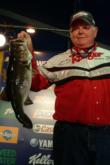 Billy Bowen Jr. is also no stranger to the big bass that lurk in Lake Toho. The Ocala, Fla., native has won two BFL tournaments on Toho in the past and plans to continue his success in this season’s FLW Tour event.
Billy Bowen Jr. is also no stranger to the big bass that lurk in Lake Toho. The Ocala, Fla., native has won two BFL tournaments on Toho in the past and plans to continue his success in this season’s FLW Tour event.
“Right now the lake is in good shape,” Bowen said. “It’s a lot cleaner than Okeechobee, and the water is right around 55 degrees. The fish are trying to spawn but they can’t. Too many cold nights are keeping the water temperature down. We’ll need at least two or three days in the mid-70s to bring the water temperature up. If the water gets in the 60s, then we’ll see a heck of a weigh-in.”
Bowen continued by saying, “If conditions remain the way they are, 12 pounds a day will put you in the top 10. If the water does warm up, I expect many anglers to be fishing fast along the beds, using Rat-L-Traps and spinnerbaits. The water is tinted, meaning a lot of fish could be on the beds, but you won’t be able to see them.
“If they’re not spawning, most anglers will be fishing slow, pitching and flipping to the Kissimmee grass and arrowheads. The good thing is that it will fish big because each body of water is capable of winning a tournament. Some guys will stay and fish Toho, but I agree that nearly half will go to Kissimmee.”
Lakeland, Fla., native Bobby Lane took seventh place at last month’s FLW Tour event on Lake Okeechobee and is looking forward to returning home to fish Lake Toho.
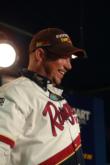 “I practically grew up on this chain of lakes,” Lane said. “My family owns two cabins on the south end of Kissimmee. Right now, the conditions on the lake are gorgeous. Some of the fish have started to spawn, but most have just moved into the shallows and are located on the inside of the grass line.
“I practically grew up on this chain of lakes,” Lane said. “My family owns two cabins on the south end of Kissimmee. Right now, the conditions on the lake are gorgeous. Some of the fish have started to spawn, but most have just moved into the shallows and are located on the inside of the grass line.
“If we get three or four days of warmer weather, that should really trigger the spawn. If the water temperature gets over 65 degrees, I predict 28 to 30 pounds will make the cutoff. If the water stays cool, I think 23 to 25 pounds should be good enough. Along with that, I think we’ll definitely see some bags in the 20-pound range.”
Lock and load
Mike Surman sees both the risk and the reward in regards to locking through to Kissimmee.
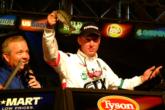 “I would agree that nearly half of the guys will head down to Kissimmee,” said Surman, a Boca Raton, Fla., native. “You can only fit 18 boats through the lock, meaning there will be six lock cycles for a field of 100 boats. Each lock cycle takes between 15 and 20 minutes, so you’ve really got to play your lock time right.
“I would agree that nearly half of the guys will head down to Kissimmee,” said Surman, a Boca Raton, Fla., native. “You can only fit 18 boats through the lock, meaning there will be six lock cycles for a field of 100 boats. Each lock cycle takes between 15 and 20 minutes, so you’ve really got to play your lock time right.
“However, I can understand why many will make the trip. The thinking is that there is a little more vegetation in Kissimmee making it easier to target the fish surrounding the vegetation.”
Even playing field?
Bowen said, “With the scraping, a lot of our secret spots have been taken away. Combine that with clearer water and the uncertainty surrounding the spawn, and we should have ourselves a very competitive tournament.”
To put it briefly, the general consensus among the anglers is that the weather will play a huge role in determining the size of the sacks. If the weather stays cool, anglers will slow it down and finesse these finicky fish. If the weather heats up, so will the fishing as anglers work quickly along the beds searching for reaction bites.
Initial reports from the Weather Channel call for partly cloudy skies with high temperatures in the mid-70s.